The Most Inconspicuous Thing About the 2025 World Series
A surprising aesthetic eccentricity will be on display in this year’s Fall Classic. Here’s how to spot it.
Note: This post is not paywalled. Enjoy! — Paul
Major League Baseball’s annual World Series begins tonight, with last season’s champs, the Los Angeles Dodgers, defending their title against the Toronto Blue Jays.
The Dodgers, obviously, get a lot of high-profile exposure. This will be their fifth World Series appearance in nine years, plus they have the sport’s best and most famous player, Shohei Ohtani. Despite all of that, their home games routinely feature an inconspicuous detail that you may not have noticed before — a detail that you can’t un-see once you become aware of it.
Let’s start here: The first two World Series games will take place at the Blue Jays’ stadium. The batter’s boxes at that ballpark look like this:
If you’re thinking that looks pretty normal, you’re right. In Toronto, the lines of the batter’s boxes are the same width as the baselines. Nothing unusual about that — that’s also how how it looks at 28 of the 29 other MLB ballparks, and on countless other baseball fields, all the way down to Little League.
But after the first two World Series games are played in Toronto, the series will move to Los Angeles for Games 3, 4, and 5, beginning next Monday night. Those games will be played at Dodger Stadium, so let’s see how the batter’s boxes look in that ballpark:
From that camera angle — the standard vantage point for most televised baseball coverage — the boxes don’t look particularly remarkable. But let’s look again, this time from a couple of other perspectives:
As you can see, the Dodger Stadium boxes are much thinner, to the point of looking almost rinky-dink! You might intuitively assume (as I once did) that the MLB rulebook stipulates a regulation width for the box lines, but that’s not the case.
This is not a new thing — Dodger Stadium has had these thinner box lines since about 2009 — but it’s an easy detail to miss on TV if you’re not looking for it. I didn’t notice the thinner lines myself until 2021, at which point I wrote a Uni Watch article about them. That article included an interview with Dodgers head groundskeeper Jordan Lorenz. The pertinent bits are worth revisiting:
Uni Watch: When did you start using the thinner lines, and what is the thinking behind it?
Jordan Lorenz: I believe it started in 2009, somewhere around in there. … We were using a four-inch line for the boxes, just like the foul lines. And one of our players came to Eric Hansen, our former head groundskeeper, and said, “I just don’t like this big, bright white line. I just kind of see it out of the corner of my eye when I’m trying to concentrate on the pitcher. Can you do something to, like, make it smaller and make it less bright?”
So that was really the impetus for it. And there’s really no specific rule that states how wide the lines have to be or anything, so we made them thinner for him — about one inch. And then we just kept doing it, and we still do it that way now.
UW: Do you recall who that player was?
JL: I don’t, honestly. It’s been a while.
UW: Wow — but whoever he was, he’s left a lasting mark on Dodger Stadium!
JL: Yep. It’s just kind of become, you know, that’s just how we do it now. We think it looks a little bit cleaner. But if there was a current player who wanted us to go back to the thicker lines, or do it a different way, we would have no qualms about doing it.
UW: Are you aware of any other ballparks — major league, minor league, college, or whatever — where they do the boxes like you guys do?
JL: Not really, not that I’ve noticed. We do get questions about it, though, mostly from other groundskeepers who’ve asked us why or how we do it that way. And then I explain it, like I just explained it to you.
UW: When you’re watching a game on TV and the ballpark has the standard thicker lines, does it bug you? Does it look wrong to you?
JL: No, no, no, not at all. I know that we’re the outliers here. We’ve become used to it and we kind of like it. But we know that we’re the odd ones.
UW: Have any players from opposing teams or umpires ever said anything to you about it?
JL: I don’t believe so, no.
UW: I found a few tweets from people who noticed the thin lines and joked on Twitter about the Dodgers running low on chalk, or the Dodgers trying to save money on chalk, stuff like that. Does it bother you that people see your work and sort of make jokes about it like that?
JL: No, because like I said, we know that we’re the odd ones here. And the fact that people are noticing it is kind of surprising, that fans even pay attention to it. There’s a lot of stuff we take for granted, and we don’t always realize there are people out there who would find some of it interesting.
I love that last quote from Lorenz — right in the inconspicuous wheelhouse!
I also love how something as familiar and standardized as a baseball diamond can still have its own subtle visual signature. So if you’re watching the World Series over the next week or so, pay close attention to those batter’s boxes, and be sure to point out Dodger Stadium’s thinner lines to people watching the game with you. They’ll no doubt think there’s something seriously wrong with you be impressed by your attention to the finer points of baseball aesthetics.
Paul Lukas has been obsessing over the inconspicuous for most of his life, and has been writing about those obsessions for more than 30 years. You can contact him here.



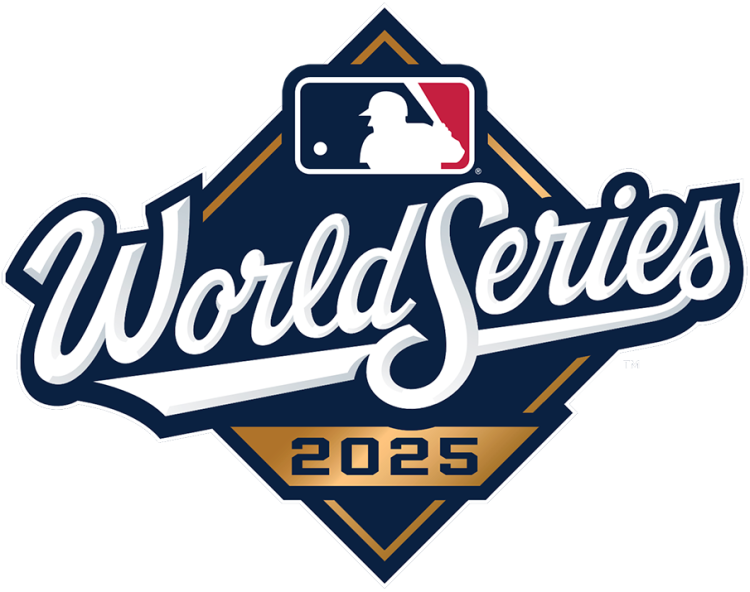
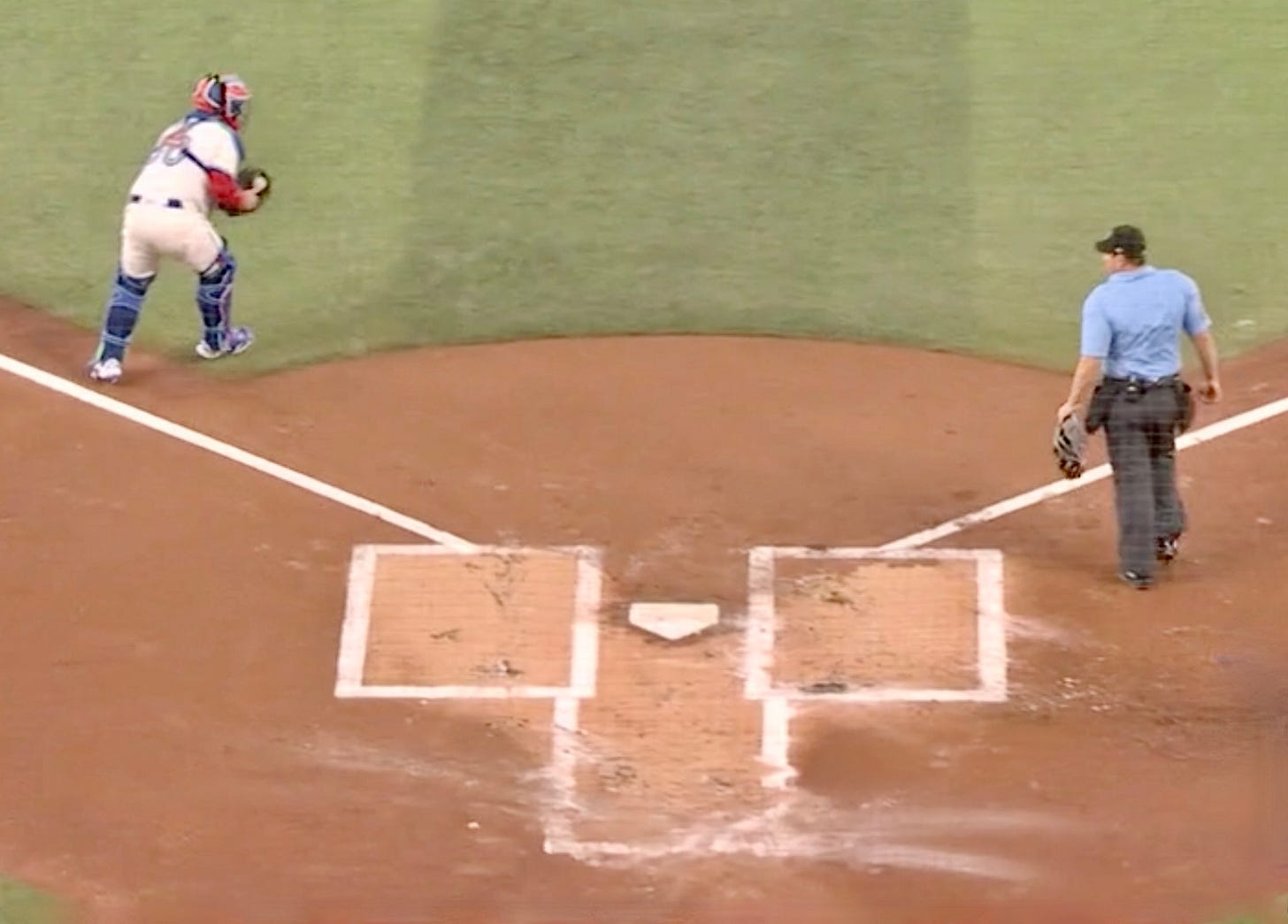
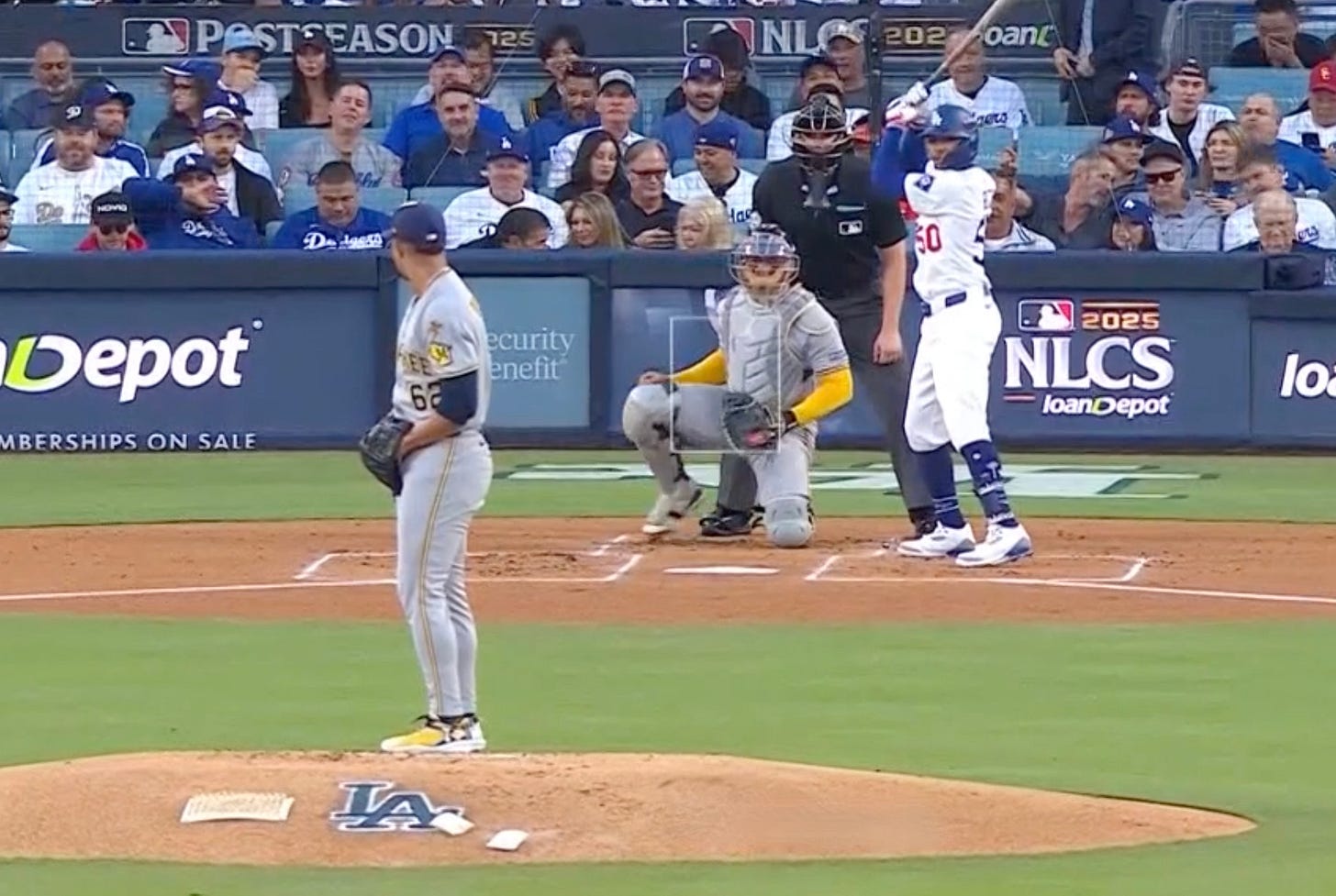
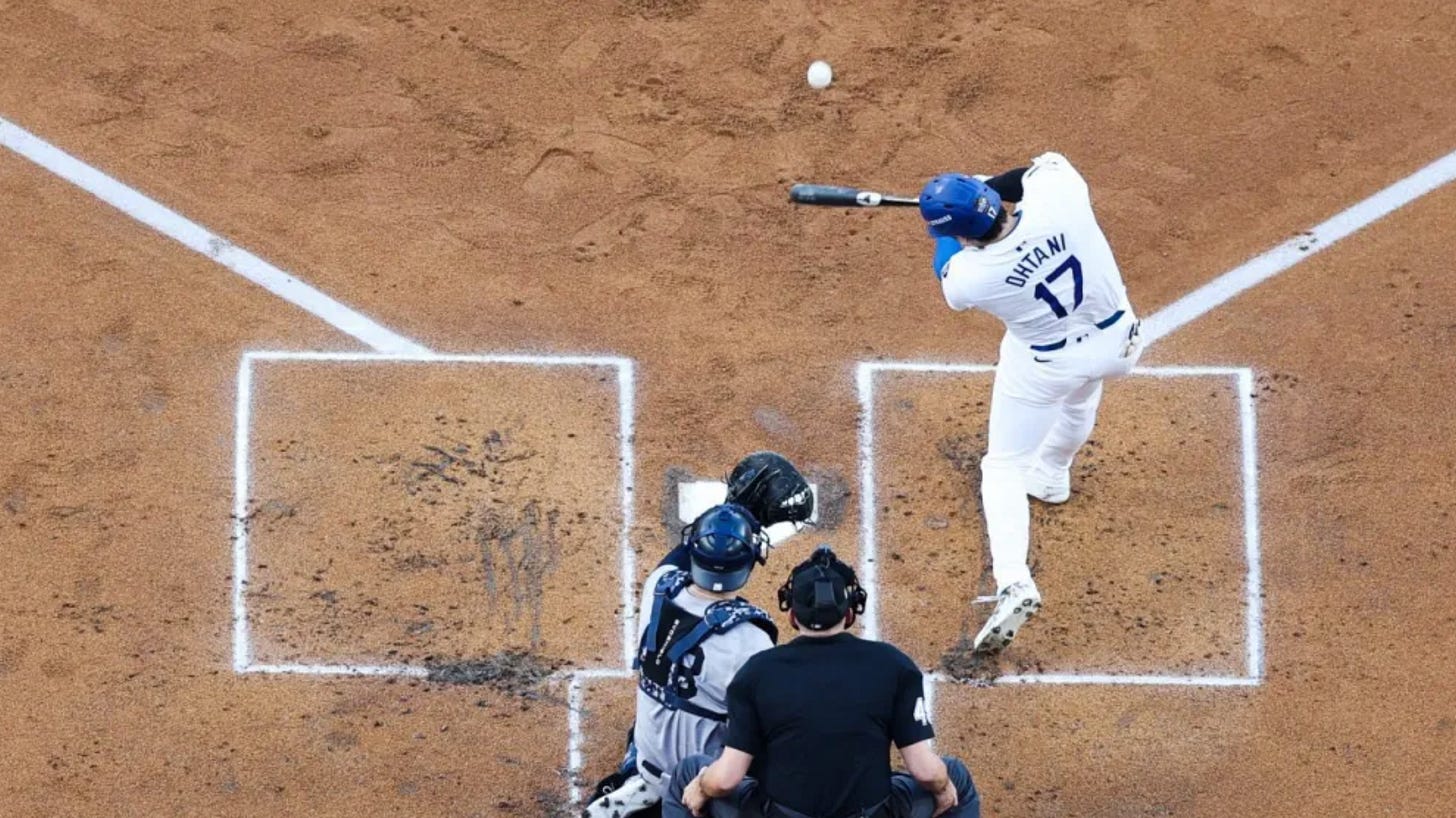
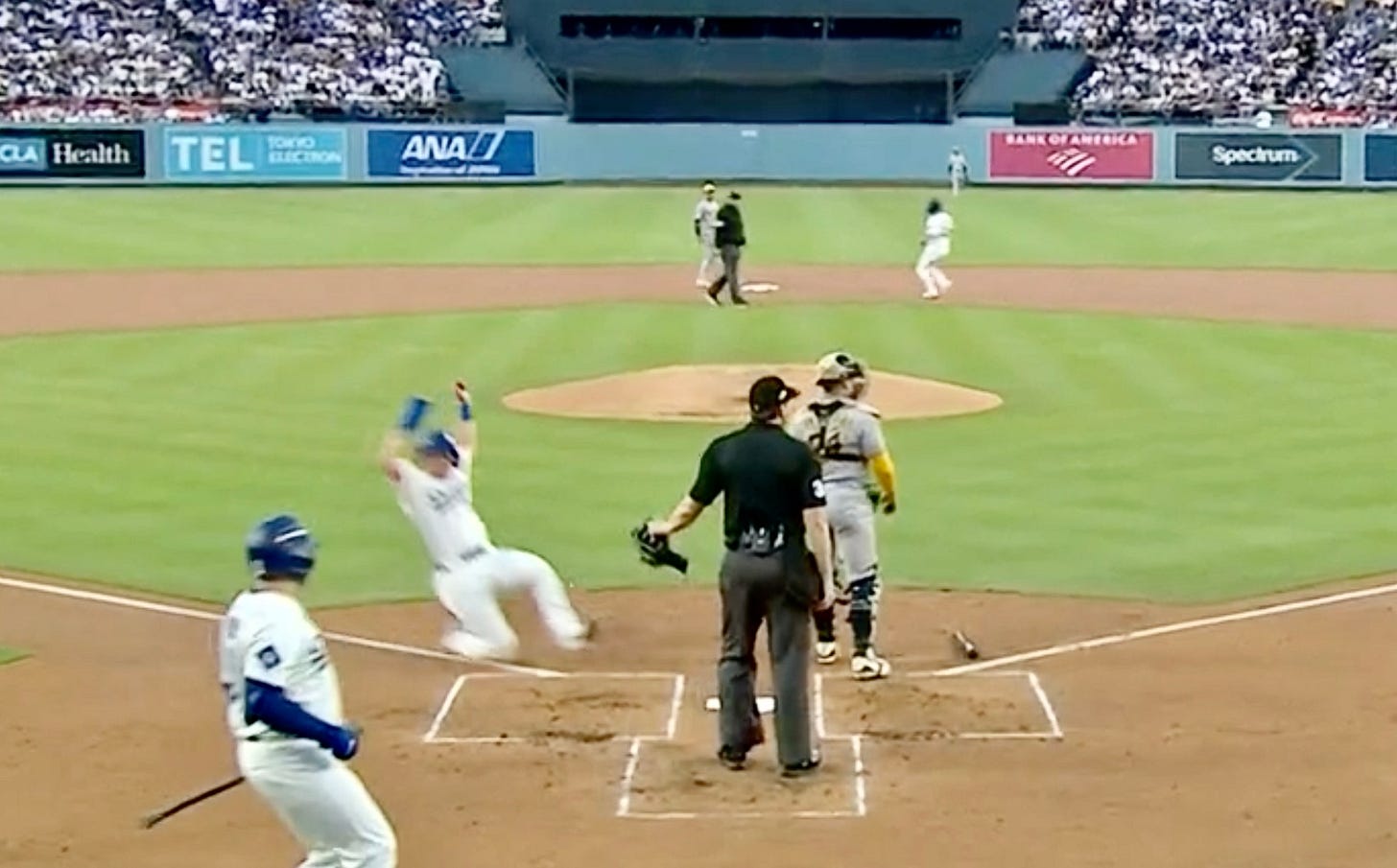
I remember reading this on Uni Watch and appreciate the reminder, Paul! What struck me about this World Series is that both team's main colours are blue and white with a dash of red. The Dodgers' red numbers on the front of their jerseys and the red maple leaf in the Jays' logo.
The video game MLB The Show accurately depicts this! I was immensely impressed when I spotted that.